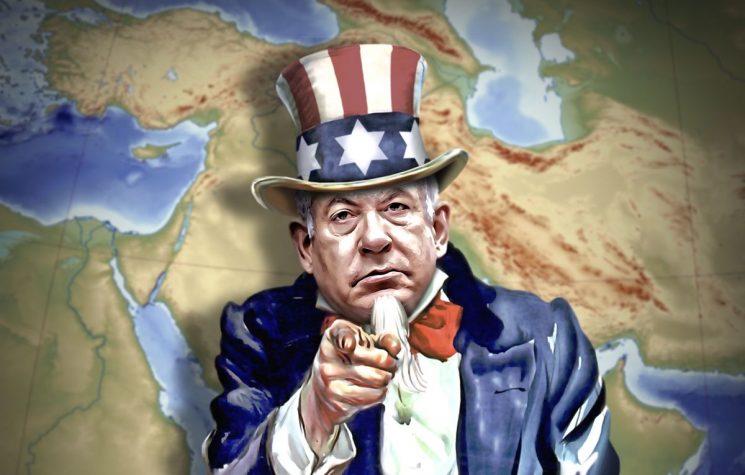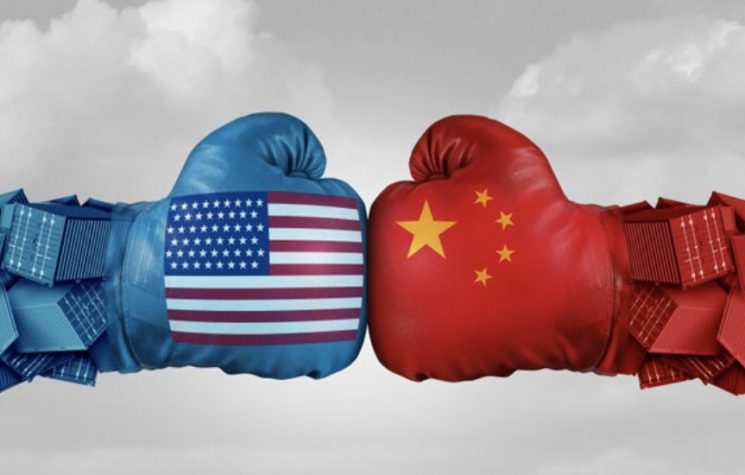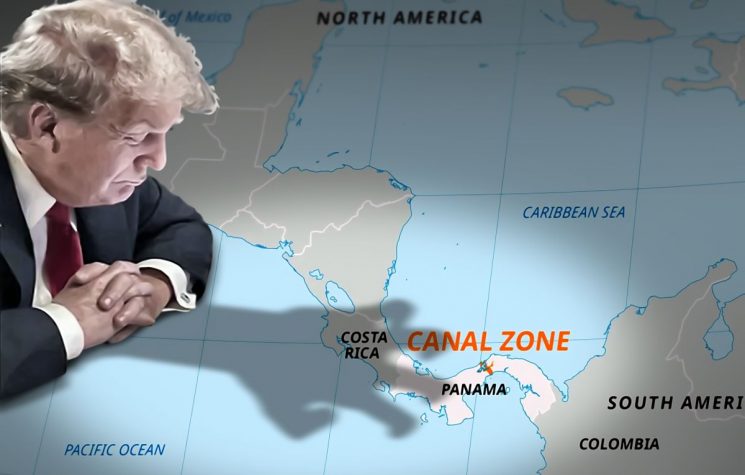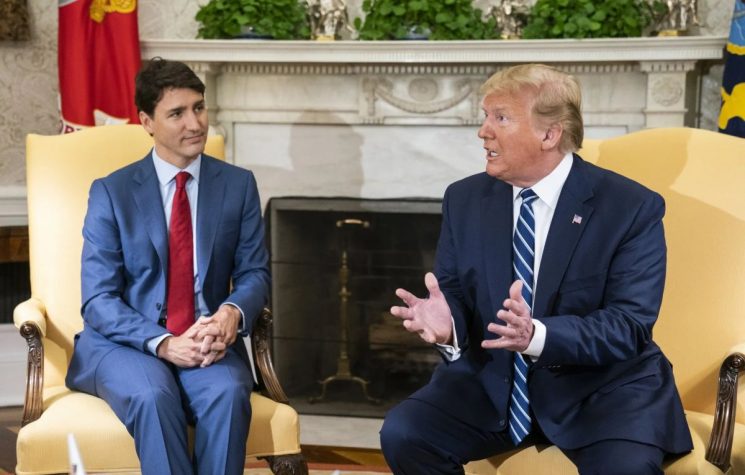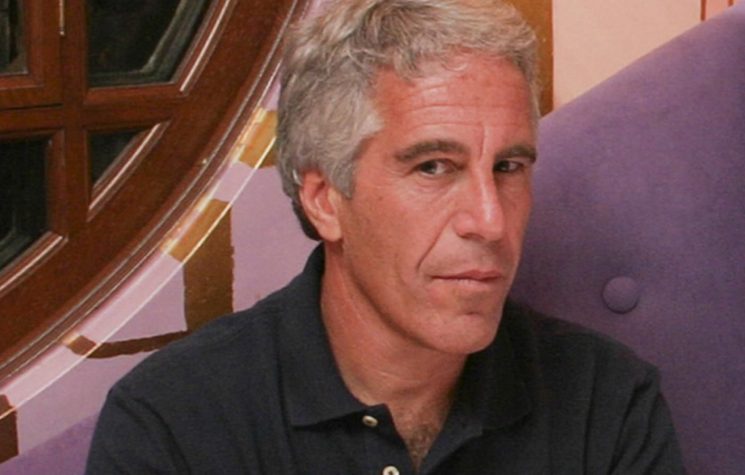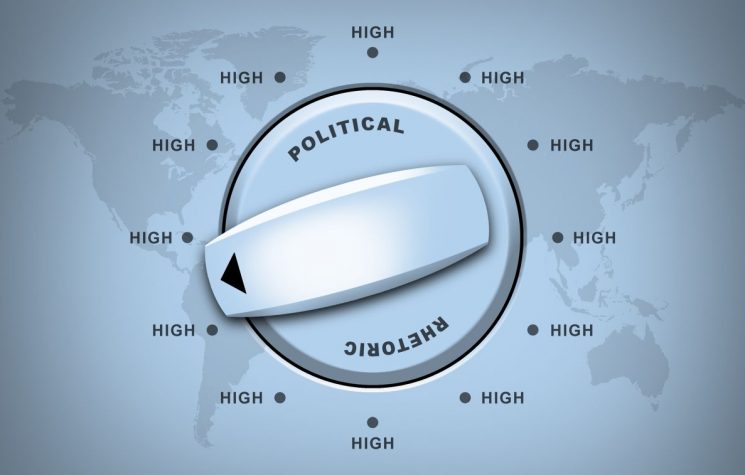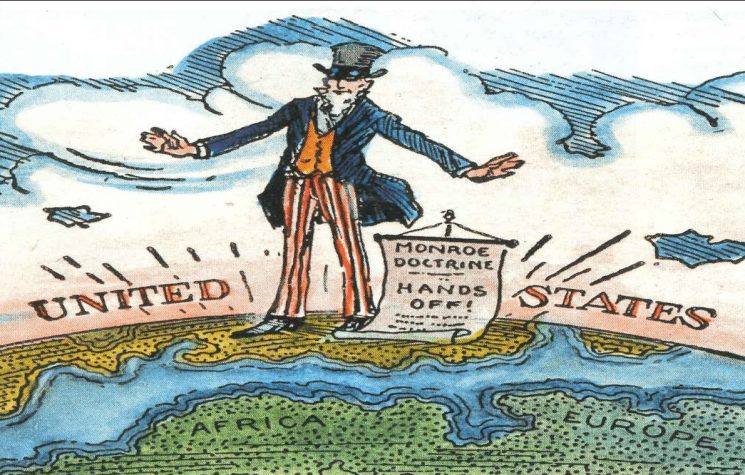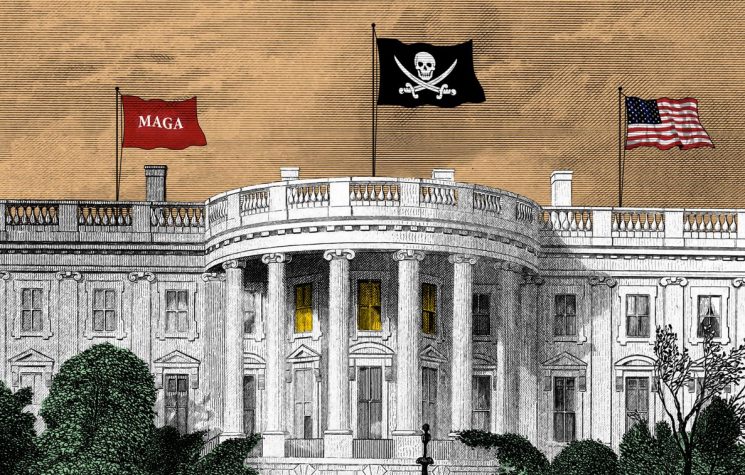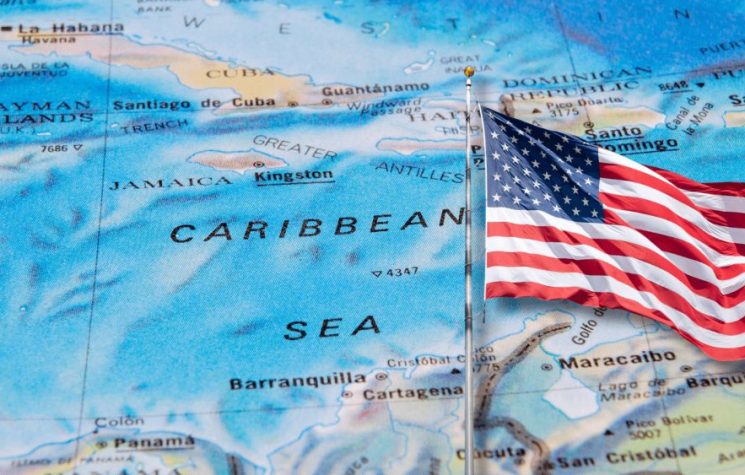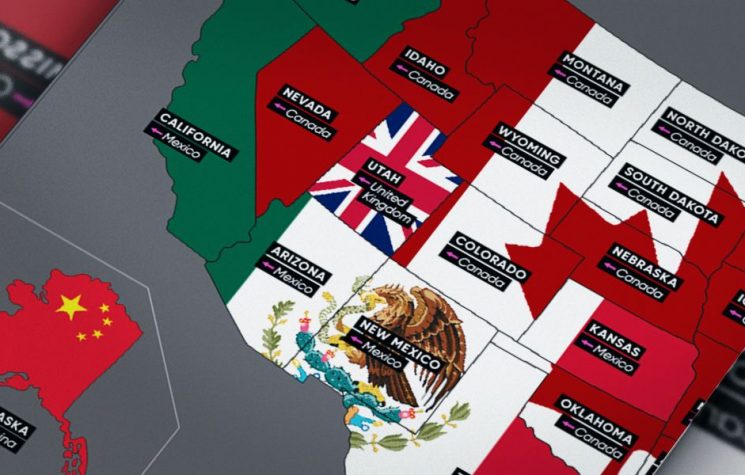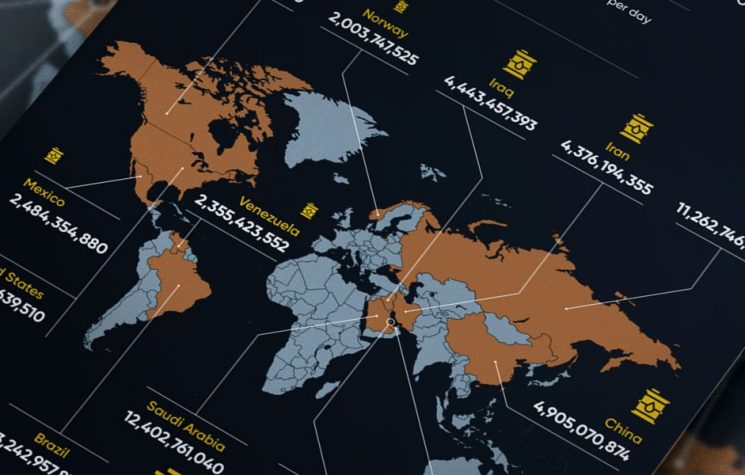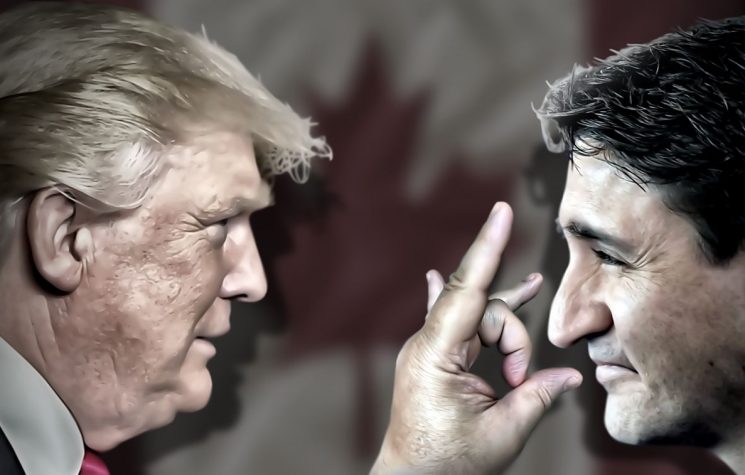Canada plays a decisive role in the import of indispensable raw materials. But can the U.S. really get by without this trade?
Contact us: info@strategic-culture.su
Trump has not yet taken office in the White House and is already threatening 25% duties on all products entering the U.S. from abroad. Canada plays a decisive role in the import of indispensable raw materials. But can the U.S. really get by without this trade?
Political market power
The big voice on the part of Donald Trump had already been raised at the end of November, in the context of some statements against China and against illegal American immigration, in particular from Mexico, and now it is back again: Trump has spoken of 25% duties on goods from Mexico, China and Canada, linking this not only to immigration but also to Fentanyl.
The latter is an extremely powerful synthetic opioid drug, mainly used in the treatment of acute pain, about 100 times stronger than morphine and 50 times stronger than heroin, but extremely harmful even in small doses if mismanaged outside of a specific treatment. In the United States, it has become a very serious social problem, because it is the number one cause of overdoses, and although it is a drug that is subject by the Drug Enforcement Administration (DEA) to a controlled prescription-only release, it is nonetheless available illegally on the black market, often passed off as a drug cut with other substances such as cocaine, or in counterfeit pills under false pretenses such as oxycodone or the famous Xanax.
Trump spoke about this on the social Truth, where he has already announced that on 20 January, among his first executive orders, he will sign the document for customs duties on all products imported from open borders.
The lunge by the next tenant of the House Bank could not fail to provoke reactions from countries affected by the threatened protectionist wave. ‘The idea that China knowingly allows fentanyl precursors to enter the United States is completely contrary to facts and reality,’ said Chinese Embassy spokesperson Liu Pengyu, adding that ’on the issue of U.S. duties, China believes that economic and trade cooperation between China and the United States is mutually beneficial. No one will win a trade war or a tariff war’.
For its part, the government of Canada recalled that its country is essential to U.S. energy supplies. ‘Our relationship is balanced and mutually beneficial, especially for American workers,’ explained Canadian Vice-Premier Chrystia Freeland, pointing out that Ottawa ‘will continue discussions on these issues with the new administration’.
With regard to Mexico, government officials had already signalled that they were ready to respond with retaliatory tariffs. ‘If you impose 25 per cent tariffs on me, I have to react with higher tariffs,’ Marcelo Ebrard, Mexico’s economy minister, assured in recent days.
Trump’s threats come as arrests for illegal border crossings from Mexico are falling. Data show arrests remain near four-year lows, with the U.S. Border Patrol making 56,530 apprehensions in October, less than a third of last year’s October count. Meanwhile, arrests for illegal border crossings from Canada have increased over the past two years. The Border Patrol made 23,721 arrests between October 2023 and September 2024, up from 10,021 in the previous 12 months. More than 14,000 of those arrested at the Canadian border were Indians, more than 10 times the number two years ago.
According to U.S. Census Bureau data for 2024, through October, the U.S. exported more than $293 billion worth of goods to Canada, while imports from its neighbour totalled nearly $344 billion. Canada has thus become the U.S.’s second largest trading partner after Mexico, accounting for 14.4% of total trade.
The problem goes beyond immigration
The war against Canada is an old one: Trump had already imposed tariffs and complicated trade relations in 2017 and 2018, making relations with Justin Trudeau rather stormy.
The trouble Trump was pointing his finger at is the North American Free Trade Agreement (NAFTA), a trade treaty signed between the United States, Canada and Mexico, which entered into force in January 1994 with the aim of creating a free trade area between the countries, gradually eliminating tariff and non-tariff barriers, so as to encourage trade and investment. The elimination of tariffs is one of the main provisions of the agreement.
NAFTA has had a significant impact in terms of increasing trade flows and integrating supply chains, but it has also favoured the relocation of labour and penalised certain occupational categories.
In 2020, the agreement was replaced by the USMCA, United States-Mexico-Canada Agreement – in Canada called CUSMA and in Mexico called T-MEC – which included the most modern e-commerce systems and imposed stricter rules for the protection of workers.
The trouble is that the U.S. no longer has domestic production and is the world’s largest importer.
From Canada, they mainly buy oil, cars, industrial machinery, plastics, paper and wood.
Crude oil imports reached a record 4.3 billion barrels per day in July 2024, according to the U.S. Energy Information Administration. We are talking about really big figures, because that is 60 per cent of oil imports, about double the amount in 2022. As the New York Times writes, ‘Mexico, China and Canada together account for more than a third of the goods and services imported and exported by the United States, supporting tens of millions of American jobs. The three countries together bought more than $1 trillion of U.S. exports and supplied nearly $1.5 trillion of goods and services to the United States in 2023′.
Analysts therefore agree on one thing: highly ‘punitive’ tariffs could jam supply chains, eventually hitting even U.S. industries that depend on the goods of close trading partners. The proposed measures could hit several strategic U.S. industries hard, add about $272 billion a year to tax burdens, raise asset prices, raise interest rates, and weaken already fragile households.
An October report by the Canadian Chamber of Commerce’s Business Data Lab found that Canada is the largest export market for 34 U.S. states, making them ‘surprisingly dependent on Canadian trade’.
Trevor Tombe, professor of economics at the University of Calgary, noted, for example, that Montana’s trade with Canada accounts for 16% of the state’s economy, while Michigan’s is 14%. Even in Texas – the seventh strongest economy in the world – trade with Canada accounts for 4% of the state’s economy.
Trudeau has emphasised the need for dialogue and cooperation, Trump’s warning has thrown Canadian politics into turmoil: last week, Canadian Finance Minister and Deputy Prime Minister Chrystia Freeland resigned due to a disagreement with Trudeau over how to handle Trump. The Canadian Prime Minister himself held talks with Trump on the very evening of the tariff threat. ‘This is a relationship that we know we have to work on, and that’s what we’re going to do,’ he said, adding that he emphasised to Trump the importance of maintaining strong ties between Canada and the U.S.
In late November, Trudeau made a surprise visit to Mar-a-Lago, Florida, to talk to the U.S. president-elect about the way forward, and as a recent response, the Canadian government unveiled a series of measures it said would strengthen security at the U.S.-Canadian border.
Canada is thus risking an economic shutdown, a veritable retaliatory political attack that would collapse exports and affect the nation’s gross domestic product, sending inflation soaring, with disastrous consequences for the entire commercial and employment fabric.
In the logic of Trump and his MAGA, this push will put an imbalance in international negotiations with Canada. We can interpret this as soft power also vis-à-vis Europe, with which Trudeau has been very well received over the past four years during Biden’s presidency, but also with regard to the extension of Canadian trade to South America, forcing Canada to mediate new routes with the U.S.
Or perhaps there is much more we do not yet know….











